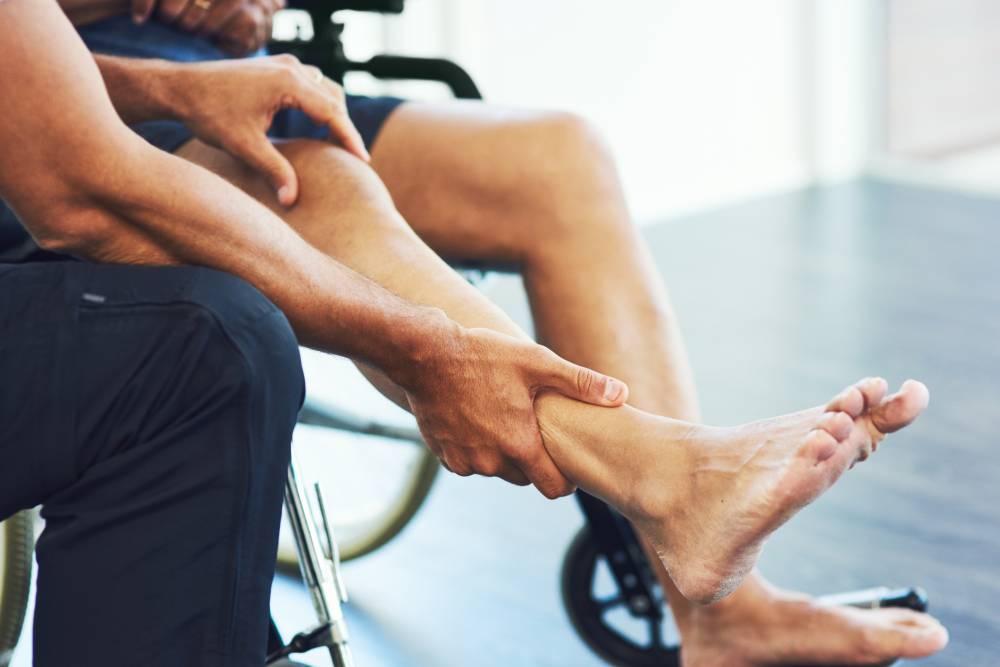
Free movement of our limbs is a prerequisite of mobility and autonomy. It’s something that most of us take for granted. However, as we age this freedom of movement can diminish and have significant consequences on our quality of life.
Joint contractures are characterised by a lack of full range of motion of a joint and are synonymous with deformity, disuse and pain. If contractures develop in an upper limb joint, they may experience difficulty with daily tasks such as dressing or eating. While contractures in lower limb joints can lead to impaired mobility, increased falls risk and bed confinement. Joint contractures further increase the risk of other adverse outcomes like pressure injuries.
Contractures are a common problem of frail older people, particularly in nursing home residents. The development of contractures is usually multifaceted with the interplay of various health conditions and situations. What we do know for sure, is that immobility due to an acute injury or disease seems to be the major risk factor. And that rate of contracture development appears to be determined by limb position, duration of immobilisation, and pre-existing pathology.
With overseas studies suggesting rates of joint contracture as high as 80% in their nursing home populations, are we doing enough here in Australia to assist in the prevention of this debilitating problem?
Traditional interventions in the prevention of contractures include prolonged stretching through the use of splints and bed positioning programs, passive range of motion exercises where the joint is assisted to move by using the opposite limb or by another person, or technical equipment such as muscle stimulating machines or ultrasound.
In healthy older adults, some studies have shown an increase in joint range of motion through prolonged stretching programs. These improvements also translated into some functional gains such as increased gait speed. However, for all of the studies which found some improvements, there are considerably more which demonstrated no improvements in range of movement or function.
A systematic review published in 2017 in Age and Ageing and titled “Interventions for the prevention and treatment of disability due to acquired joint contractures in older people”; found that the “evidence for the effectiveness of interventions to prevent and treat disability due to joint contractures is weak, particularly for established nursing interventions such as positioning and passive movement”. It further concluded that “better understanding is required regarding the delivery of interventions, such as their intensity and duration”.
The same story seems to apply with plain old stretching. A 2017 Cochrane review, which looked at 36 studies and included more than 1400 participants also concluded that stretch does not have clinically important effects on joint mobility, whether a neurological impairment is present or not.
In other words, what we’ve been traditionally doing doesn’t seem to work.
More invasive procedures are available such as the use of botulinum toxin, mobilisation under anaesthesia and surgical release of tendons. However, these procedures come with significantly higher inherent risk, particularly in our older population.
In the absence of strong evidence, early intervention with regular passive movements of the affected limbs may prevent contracture development and is likely the best medicine for contracture management. As with most things, it appears prevention is better than cure.
To best support our older adults, it’s imperative that we spend as much time as we can each day assisting residents to move their joints. We need to create awareness on the risks of immobility, and then educate both residents and staff on the importance of promoting physical activity and where necessary, on how to passively mobilise joints. Whilst its long-term effectiveness is questionable, prolonged positioning and splinting can be used to try and reduce the development rate of contractures and assist in improving comfort levels. With a more proactive approach hopefully we can reduce the excess disability in older people caused by contractures and have a significant impact on overall quality of life and functioning.
And keeping active movement is the absolute key to preventing contractures. ‘ The Extensors must always be strong enough to overcome the Flexors’. Eg Focus on hand opening, reaching, knee extension, sit-to-stand etc – don’t give those Flexors an opportunity to cause contractures!